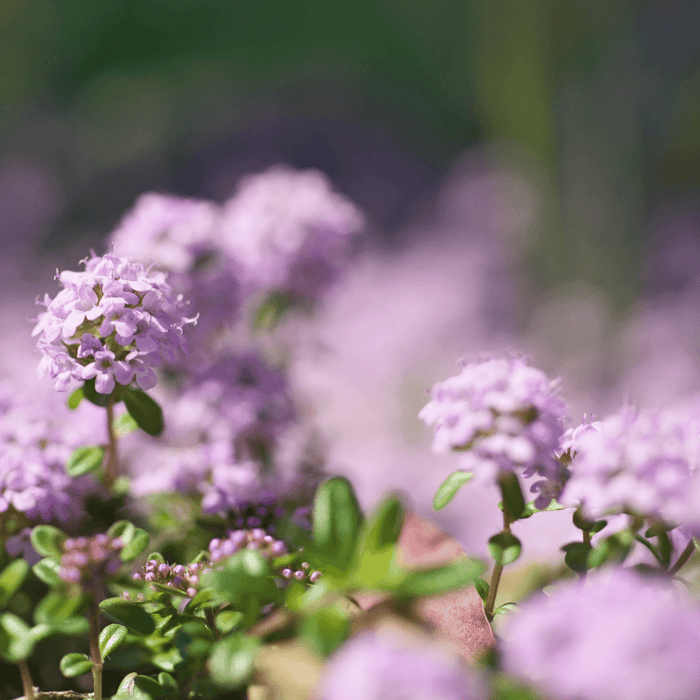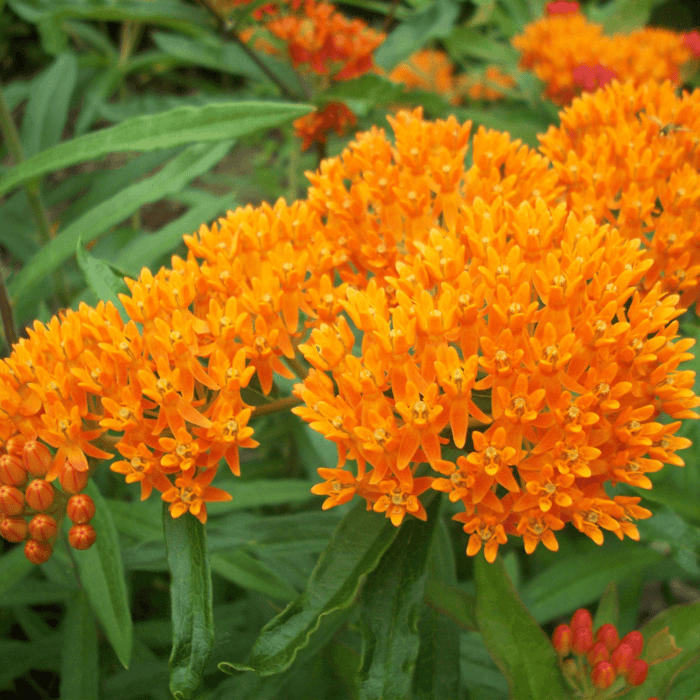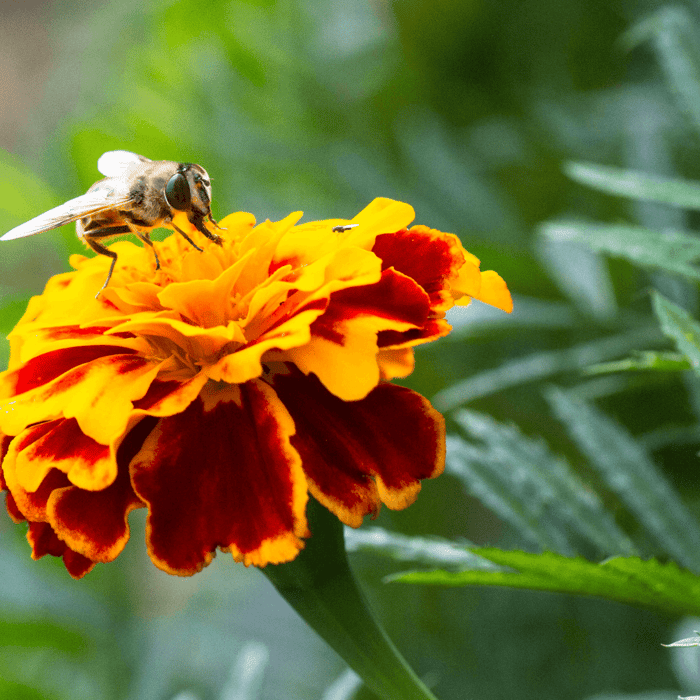Hi, I'm Jeena, an avid gardener, and I'm here to share my knowledge on how to sow creeping thyme seeds. Creeping thyme (Thymus serpyllum) is a low-growing, drought-tolerant, deer-resistant ground cover that thrives in full sun. It's an excellent choice for rock gardens, as a lawn substitute, or to fill gaps between stepping stones. This step-by-step guide will cover everything you need to know to grow creeping thyme plants in your garden. With proper care and attention, you can enjoy this wonderful plant's beauty, fragrance, and versatility.
1. Characteristics of Creeping Thyme
- History of the Seed: Creeping thyme is native to Europe and North Africa and has been cultivated for centuries. This member of the Lamiaceae family is known for its aromatic foliage and delicate flowers. Its history dates back to ancient civilizations, where it was used for culinary and medicinal purposes.
- Days till Maturity: Creeping thyme typically takes about 90 to 180 days from planting to reach full maturity. This allows the plants to establish a robust root system and develop their dense, low-growing habit.
- Planting Depth: Sow seeds on top of the soil, as they need light to germinate. This is essential for successful germination, resulting in a higher seedling survival rate.
- Plant Spacing: Space creeping thyme plants 12 inches apart to allow room for growth. This will ensure that each plant has sufficient space to spread and develop a healthy root system.
- Days to Germination: Seeds usually germinate within 14 to 21 days. Be patient and maintain consistent moisture during this period to facilitate germination.
- Starting Indoors or Direct Sown: Creeping thyme seeds can be started indoors or in direct sown. However, direct sowing is often preferred to avoid transplant shock. Direct sowing also allows the plants to establish themselves in their final growing location.
- Full Sun or Partial Shade: Creeping thyme thrives in full sun but can tolerate partial shade. The right amount of sunlight will help the plants grow strong and produce abundant flowers.
- When to Harvest: Creeping thyme is primarily grown for its ground cover, but its leaves can be harvested for culinary purposes once the plants are well-established. Harvest the leaves as needed throughout the growing season, not removing too many at once.
- Plant Size: Creeping thyme plants grow 2 to 4 inches tall and spread up to 12 inches wide. Their low-growing habit makes them ideal for use as a ground cover or in other landscaping projects.
Creeping Thyme Seeds
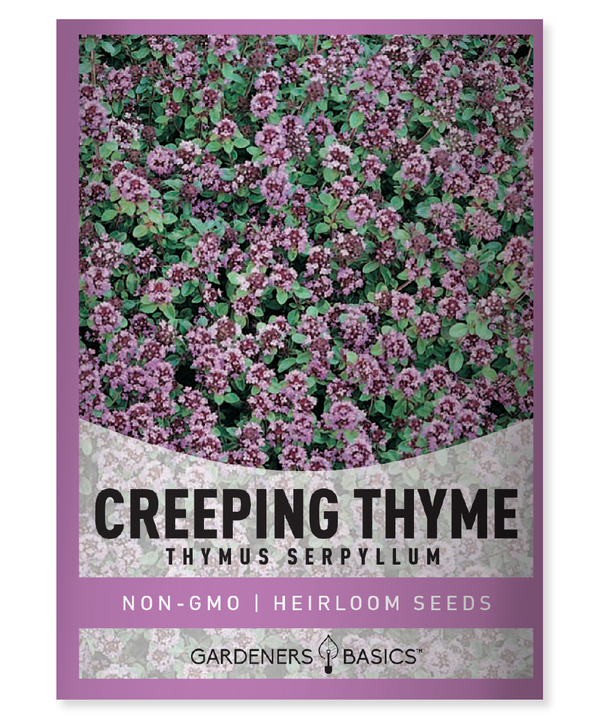
$2.49
Creeping Thyme Seeds - Heirloom, Non-GMO, Non-Hybrid, Open-Pollinated Transform your garden into a fragrant, lush haven with Creeping Thyme seeds! Perfect for ground cover, borders, or between stepping stones, Creeping Thyme (Thymus serpyllum) is a low-maintenance perennial herb that thrives… read more
2. Selecting a Planting Site
Choose a site with well-drained soil and total sun exposure. Creeping thyme is drought-tolerant and thrives in slightly alkaline soil. The ideal location will have good drainage, plenty of sunlight, and neither acidic nor alkaline dirt. If your soil's pH is unsure, you can test it with a soil test kit or consult your local extension office for advice.
3. Preparing the Seed Bed
To prepare the seed bed, remove any weeds or debris and loosen the soil to a depth of 6 inches. Amend the soil with compost or other organic matter to improve drainage and fertility. This will create a healthy environment for your creeping thyme seeds to germinate and grow. Rake the soil surface smooth, leveling any high spots or filling low areas to create an even planting surface.
4. Planting Creeping Thyme Seeds
Sow the creeping thyme seeds on top of the soil, as they require light for germination. Space the seeds about 12 inches apart. Gently press the seeds into the soil surface, but don't cover them with soil. Light is crucial for successful germination, so ensuring the sources remain on the surface will help to maximize the chances of healthy seedling development.
5. Watering and Fertilizing
Keep the seed bed moist but not soggy until the seeds germinate, which usually takes 14 to 21 days. After germination, gradually reduce watering frequency. Creeping thyme is drought-tolerant and prefers slightly dry conditions. Be mindful of overwatering, as this can lead to root rot and other issues that can negatively impact the health of your plants.
Fertilize the plants with a balanced, slow-release fertilizer in the spring and fall. This will provide optimal growth and flowering nutrients, ensuring your creeping thyme plants remain healthy and vibrant throughout the growing season.
6. Mulching and Weed Control
Apply a thin layer of organic mulch around the plants to help conserve moisture, suppress weeds, and regulate soil temperature. Be sure to keep the mulch away from the base of the plants to prevent rot. Mulching not only has practical benefits, but it can also enhance the appearance of your garden by providing a uniform and tidy look to your planting area.
7. Pests and Disease
Creeping thyme is relatively pest and disease-resistant. However, it may be susceptible to spider mites, aphids, and thrips. Use insecticidal soap or neem oil to control these pests, applying as directed to minimize potential harm to beneficial insects.
Root rot and mildew can occur if the plants are grown in poorly drained soil or overwatered. Ensure proper drainage and avoid overwatering to prevent these issues. Regularly inspect your plants for any signs of disease or pest infestation, taking prompt action to address any problems that may arise.
Wildflower, Perennial, & Annual Flower Seed Kit | 35 Variety Pack
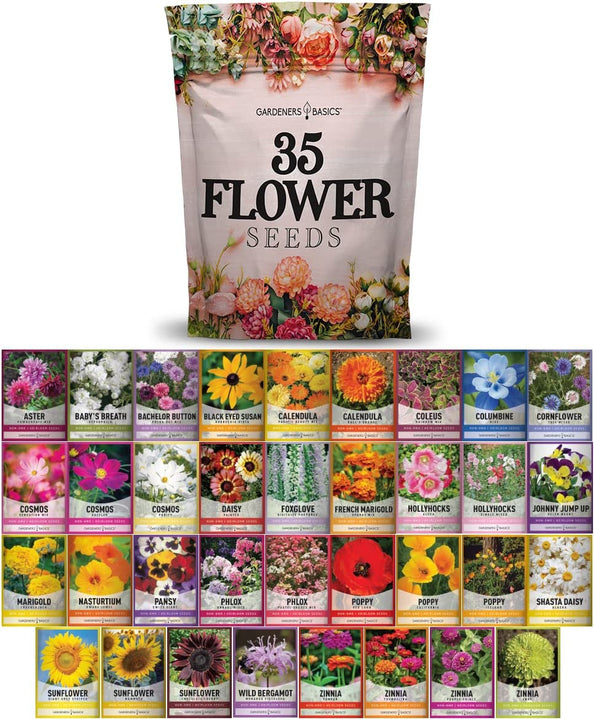
$29.95
$49.95
35 Flower Seeds Variety Pack – Heirloom, Non-Hybrid, Non-GMO, Open-Pollinated – Perfect for Pollinator-Friendly Gardens Transform your garden with our 35 Flower Seeds Variety Pack, offering a stunning and diverse selection of heirloom, non-hybrid, and non-GMO seeds. Each variety in… read more
8. Pruning and Maintenance
Trim the plants in the spring to encourage bushier growth and remove dead or damaged stems. If the plants become too dense, you can divide them in the spring or fall to promote better airflow and prevent disease. Regular pruning will not only keep your plants looking their best but will also help to ensure their long-term health and vigor.
9. Propagating Creeping Thyme
Creeping thyme can be propagated by division, stem cuttings, or seeds. To propagate by division, dig up a plant clump in the spring or fall and separate it into smaller sections. Replant these sections in your garden, spacing them about 12 inches apart. This method is an efficient way to create new plants for your garden or to share with friends and family.
Take a 4-inch-long cutting from a healthy plant in the spring or early summer for stem cuttings. Remove the lower leaves and dip the cut end in the rooting hormone. Plant the cutting in a moist potting mix and keep it in a bright, warm location. The cutting should root within 3 to 4 weeks, at which point it can be transplanted into your garden.
10. Uses of Creeping Thyme
Creeping thyme has various uses in the garden and landscape:
- Ground Cover: It's a low-growing habit, and dense foliage makes it an excellent ground cover for sunny areas. It's also suitable for planting around stepping stones or in rock gardens, which will add visual interest and help prevent erosion.
- Lawn Substitute: Creeping thyme can be an attractive, low-maintenance alternative to traditional grass lawns. It can tolerate light foot traffic and requires less frequent mowing. Additionally, it's more eco-friendly, as it consumes less water and requires fewer chemical treatments than traditional lawns.
- Aromatic Garden: The fragrant foliage of creeping thyme adds a pleasant scent to the garden. Plant it along pathways or seating areas to enjoy its aroma. The smell can also help to deter some pests, making it a valuable addition to an organic garden.
- Culinary Use: The leaves of creeping thyme can be harvested and used as a fresh or dried herb in various dishes. Its subtle, earthy flavor pairs well with meats, vegetables, and sauces, adding a delightful depth to your culinary creations.
In Conclusion
Growing creeping thyme from seed is a rewarding endeavor that can add beauty and fragrance to your garden. Following this step-by-step guide will benefit you from this versatile, drought-tolerant, and deer-resistant ground cover. With proper care and attention, your creeping thyme plants will thrive and provide a lovely, low-maintenance addition to your outdoor space. Whether used as a ground cover, lawn substitute, or aromatic addition to your garden, creeping thyme is an excellent choice for any gardener looking to enhance their landscape.
 Frequently Asked Questions - How To Sow Creeping Thyme Seeds
Frequently Asked Questions - How To Sow Creeping Thyme Seeds
Q: How long does it take for creeping thyme seeds to germinate?
A: Creeping thyme seeds usually take 14 to 21 days to germinate. Keep the seedbed consistently moist during this period to facilitate germination.
Q: Can creeping thyme be grown in partial shade?
A: Although creeping thyme prefers full sun, it can tolerate partial shade. However, it may grow less densely and produce fewer flowers in shadier conditions.
Q: Is creeping thyme deer-resistant?
A: Yes, creeping thyme is considered deer-resistant. Its strong scent makes it less appealing to deer, reducing the likelihood that they will feed on the plants.
Q: Can creeping thyme be used as a lawn substitute?
A: Absolutely! Creeping thyme is an excellent low-maintenance lawn substitute requiring less water and fewer chemical treatments than traditional grass lawns.
Q: How do I propagate creeping thyme?
A: Creeping thyme can be propagated by division, stem cuttings, or seeds. Division involves separating a plant clump into smaller sections and replanting them. Stem cuttings require a 4-inch-long cutting, removing the lower leaves, dipping the cut end in rooting hormone, and planting it in a moist potting mix. Seeds can be sown directly on top of the soil in your garden, ensuring they receive light for germination.
Q: Is creeping thyme drought-tolerant?
A: Yes, creeping thyme is drought-tolerant and prefers slightly dry conditions. However, providing consistent moisture during germination is essential, and establishing a regular watering schedule for newly planted seedlings is necessary. Once verified, the plants can tolerate drier conditions.
Q: Can creeping thyme handle foot traffic?
A: Creeping thyme can tolerate light foot traffic, making it an excellent choice for planting around stepping stones or as a lawn substitute. However, it's not as resilient as traditional turf grasses, so avoiding heavy or frequent foot traffic is best.
Q: How do I care for creeping thyme plants during winter?
A: Creeping thyme is a hardy perennial that can withstand cold temperatures. In most climates, it doesn't require any special winter care. However, in regions with severe winters, you can protect your plants by applying a light layer of mulch or straw to help insulate the roots from extreme cold.
Q: Can I grow creeping thyme in containers?
A: Yes, creeping thyme can be grown in containers. Be sure to choose a well-draining potting mix and a container with drainage holes to prevent waterlogged soil. Place the container in a sunny location and water the plants regularly, ensuring the ground remains moist but not soggy.
Q: How do I use creeping thyme in cooking?
A: The leaves of creeping thyme can be harvested and used fresh or dried in various dishes. Its subtle, earthy flavor pairs well with meats, vegetables, and sauces. Fresh leaves can be added directly to salads or used as a garnish, while dried leaves can be incorporated into spice blends or added to recipes. To dry creeping thyme, simply hang small bundles of stems in an excellent, dark location until the leaves are dehydrated, then store them in an airtight container.



